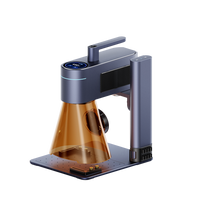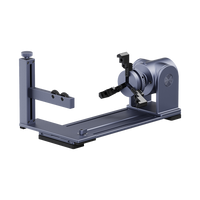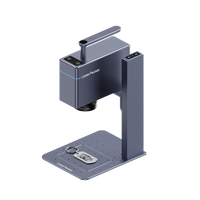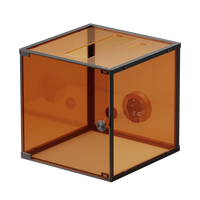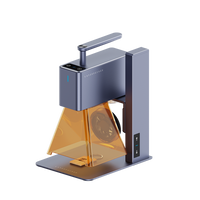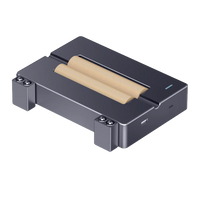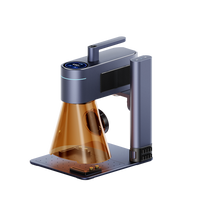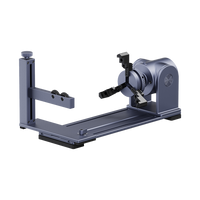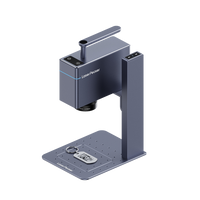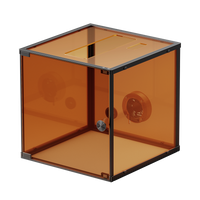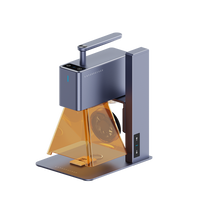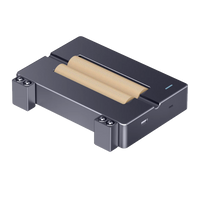Jewelry laser engraving involves the art of inscribing designs, patterns, symbols, or texts onto various types of jewelry, enhancing its aesthetic appeal or sentimental value. Engraving adds a personal touch to jewelry, transforming it into a unique and cherished piece. It allows individuals to commemorate special moments, express emotions, or customize gifts for loved ones.
This blog aims to provide a comprehensive guide on how to engrave jewelry, covering various engraving methods, preparation steps, tools needed, techniques, creative ideas, and tips for successful engraving.

In this article:
Part 1: What is Jewelry Engraving?
Jewelry engraving is the process of etching or carving designs onto the surface of jewelry items.
Different Types of Jewelry Suitable for Engraving
Almost any piece of jewelry with a flat or curved surface can be engraved. Common items include rings, wedding bands, necklaces, pendants, bracelets, cufflinks and even watches.
Different Methods of Jewelry Engraving
- Laser Engraving: A high-tech method that uses lasers to create precise and intricate designs on various jewelry materials, providing versatility and accuracy.
- Machine Engraving: Utilizes engraving machines equipped with rotating cutters or drills to inscribe designs onto jewelry items. This method offers precision and speed.
- Hand Engraving: This traditional method involves using specialized tools, such as gravers or burins, to manually carve designs onto the jewelry surface.
Part 2: Preparation Before Engraving
- Selecting the Right Piece of Jewelry for Engraving
Choose jewelry made of materials suitable for engraving, such as gold, silver, platinum, stainless steel, or certain types of gemstones. Ensure the surface is flat or appropriately curved for the chosen engraving method.
- Cleaning and Preparing the Surface for Jewelry Engraving
Thoroughly clean the jewelry surface to remove any dirt, oils, or residues that could affect the engraving process. Use specialized jewelry cleaning solutions and soft cloths for this purpose.
- Choosing the Right Font or Design for Jewelry Engraving
Consider the size and shape of the jewelry piece when selecting the font or design. Factors such as readability, aesthetics, and personal preference should be taken into account. Sketch or mark the chosen design lightly on the jewelry surface as a guide before engraving.
Part 3: How to Engrave Jewelry with Laser Engraver?
Laser engraving involves using high-powered lasers to etch precise designs onto jewelry surfaces, offering exceptional precision and the ability to create intricate details.
Tools and Materials Needed for Laser Engraving
- Jewelry Laser Engraving Machine: Equipment equipped with a high-powered laser and computer-controlled system for engraving.
- Computer Software: Used for designing and inputting the desired text or pattern for engraving.
- Safety Equipment: Safety goggles and gloves to protect against laser hazards.
Advantages of Laser Engraving
- Unparalleled Precision: Laser technology allows for extremely fine and intricate details in the engraving process.
- Versatility and Flexibility: Can engrave on a wide variety of materials, including metals, glass, wood, and more.
Limitations of Laser Engraving
Initial Cost: Laser engraving machines can have a higher initial investment compared to other methods.
Material Suitability: While versatile, not all materials are suitable for laser engraving.
Step-by-Step Guide to Laser Engraving
- Machine Preparation: Ensure the laser engraving machine is correctly set up and adjusted for the specific jewelry material.
- Design Input: Use computer software to input the desired design, text, or pattern, adjusting size, orientation, and placement as needed.
- Laser Engraving Process: Start the laser to follow the programmed design and engrave the jewelry surface accurately.
- Post-Engraving Inspection: Check the engraving quality and perform necessary cleaning or touch-ups.
Part 4: How to Engrave Jewelry with Cricut Maker?
Machine engraving with a Cricut Maker involves utilizing a computer-controlled cutting machine that, with the appropriate tools and settings, can perform engraving on various materials, including metals like aluminum and copper, as well as soft metals like brass or silver.
Tools and Materials Needed for Machine Engraving
- Cricut Maker: The machine equipped with compatible engraving tools and a designated platform for metal engraving.
- Engraving Tip or Blade: Specialized tools designed for engraving on metal surfaces, compatible with the Cricut Maker.
- Design Software: Software compatible with the Cricut Maker for creating and editing designs to be engraved.
- Metal Sheets: Suitable metal sheets compatible with the Cricut Maker for engraving jewelry pieces.
Advantages of Cricut Machine Engraving
- Precision and Accuracy: Machines offer high precision and accuracy in engraving intricate designs onto various jewelry materials.
- Versatility: Suitable for engraving a wide range of fonts, patterns, and designs onto different types of jewelry.
- Ease of Use: Utilizing design software and a user-friendly interface, the Cricut Maker simplifies the engraving process, making it accessible for beginners.
Limitations of Cricut Machine Engraving
- Material Compatibility: While the Cricut Maker can engrave on certain metals, it may have limitations regarding the depth and intricacy of the engravings on harder metals.
- Tool Constraints: The available engraving tools for the Cricut Maker might have specific limitations in terms of the size and depth of engravings achievable on metal surfaces.
- Learning Curve: Achieving optimal results may require some experimentation and familiarization with settings and materials, especially for those new to using the Cricut Maker for metal engraving.
Step-by-Step Guide to Machine Engraving
- Preparation: Ensure the Cricut Maker is set up and calibrated for metal engraving, and select appropriate settings for the specific metal sheet.
- Design Setup: Use compatible design software to input the desired design, text, or pattern for engraving onto the metal surface.
- Tool Insertion and Configuration: Install the engraving tool or blade into the Cricut Maker and configure settings such as depth and speed for engraving.
- Engraving Process: Initiate the Cricut Maker to follow the programmed design and engrave the jewelry surface accurately.
- Post-Engraving Inspection: Check the engraving quality, perform any necessary cleaning, and adjust settings for improvements if needed.
Part 5: How to Engrave Jewelry by Hand?
Hand engraving is a traditional method that involves using specialized hand tools to manually carve designs onto the surface of jewelry items. It requires skill, precision, and artistry to create intricate and personalized engravings.
Tools and Materials Needed for Hand Engraving
- Gravers or Burins: These specialized tools have sharp tips for cutting into metal surfaces.
- Vice or Holding Device: Used to secure the jewelry piece in place during engraving.
- Magnifying Glass: Helps in achieving precision and accuracy while engraving small details.
- Protective Gear: Safety goggles and gloves to protect against metal shavings and debris.
Advantages of Hand Engraving
- Artistic Precision: Hand engraving allows artisans to achieve highly detailed and intricate designs, providing a personalized and unique touch to each piece.
- Customization: Offers the flexibility to engrave various fonts, designs, and patterns based on individual preferences.
- Artisanal Craftsmanship: Hand engraving showcases the skill and artistry of the craftsman, creating a sense of authenticity and value in the engraved jewelry.
Limitations of Hand Engraving
- Time-Intensive: Hand engraving can be a time-consuming process, especially for intricate designs, requiring patience and skill.
- Skill-Dependent: Achieving high-quality hand engravings requires significant skill, practice, and expertise, making it challenging for beginners.
- Limited Reproducibility: Each hand-engraved piece is unique, making it challenging to replicate exact designs for mass production.
Step-by-Step Guide to Hand Engraving:
- Securing the Jewelry Piece: Use a vice or holding device to securely hold the jewelry piece, ensuring it doesn't move during engraving.
- Marking the Design: Lightly mark the design or text on the jewelry surface using a pencil or a marker as a guideline for engraving.
- Using the Engraving Tool with Proper Technique: Hold the graver at the correct angle and use controlled, confident strokes to engrave the marked design onto the jewelry surface.
- Finishing Touches and Cleaning: Once the engraving is complete, clean the jewelry piece to remove any debris or residues. Polish the engraved area gently to enhance its appearance.
FAQs About Jewelry Engraving
1. What materials can be engraved on jewelry?
Common materials for jewelry engraving include gold, silver, platinum, stainless steel, titanium, and certain gemstones. Each material may require specific engraving techniques or tools.
2. Is it possible to remove or alter an engraving on jewelry?
While it's challenging to remove engraving entirely without affecting the jewelry's appearance, certain methods like re-polishing or covering the engraving with a new layer of metal might be attempted by professional jewelers.
3. How to engrave jewelry at home?
Engraving jewelry at home requires skill, tools (like gravers or home-friendly machines), and caution due to the risk of damaging valuable pieces. Hand engraving demands workspace, safety gear, and patience. Machine engraving, like using a Cricut Maker, needs design software and proper setup. Beginners should practice on scrap items first, and complex or valuable jewelry might be better entrusted to professionals for safe and precise engraving.
Conclusion
In conclusion, jewelry engraving is a meticulous craft that offers the opportunity to add a personal touch and sentimental value to cherished pieces. Whether done by hand using specialized tools or with the assistance of modern machines like a Cricut Maker or a Laser Engraver, the art of engraving demands skill, patience, and careful consideration.
Considering the nature of the jewelry, the intricacy of the design, and one's proficiency, deciding whether to engrave at home or seek professional services is crucial. Beginners should start with practice on less valuable pieces to refine their skills before attempting engraving on cherished jewelry.






